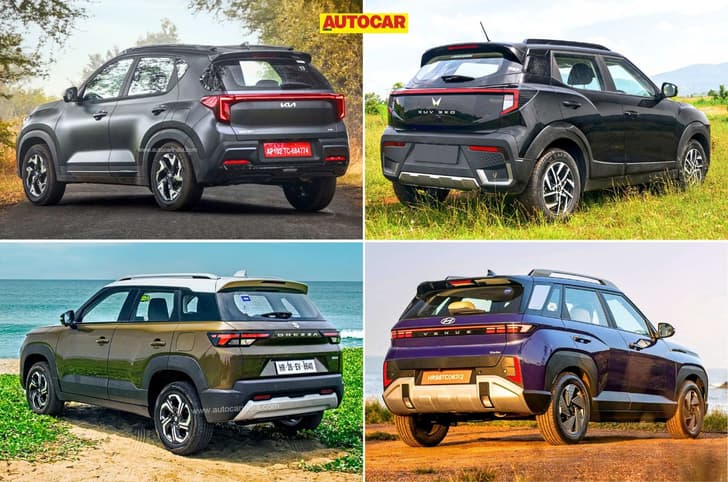As a motoring icon, Suzuki has worked towards creating some of the most memorable, small, lightweight vehicles globally. However, its history also consists of a variety of capable off-roaders and four-wheel drive systems. The Japanese brand's journey began in the 1950s when it become one of the leading Kei-car manufacturers. These cars had to meet the Japanese government’s tax norms and automotive standards (dimensions and engine size limitations), which resulted in their lower pricing and high value for money. During this time, Suzuki came up with the idea of taking inspiration from the 4x4 Jeep models used in WW2.
1970 Suzuki LJ10

Suzuki’s journey of producing 4X4 vehicles began with the LJ10, launched in the Japanese market in April 1970. Being the first mass-produced 4X4, the SUV was strictly a 3-seater, with the spare tyre fitted behind the front passenger seat; this unusual placement was due to limitations arising from the segment's dimension norms. The LJ10 came with a 25hp, two-cylinder petrol engine, which was mated to a 4-speed manual transmission and powered the rear wheels. It also featured a mechanical transfer case that could be controlled via a protruding lever, which allowed drivers to engage or disengage four-wheel drive based on the road and driving conditions.
Throughout the next decade, Suzuki began exporting the LJ50 (1975) and the LJ80 (1977) to foreign markets, during which time it was known as the ‘Jimny’. The LJ80 was the final LJ series model, which was powered by a 41.6hp, four-cylinder petrol engine.
1981 Suzuki SJ410/SJ413

To capitalise on its overseas sales success, Suzuki launched the SJ410, which sported a new exterior and interior design. Powered by a new 45hp, 1.0-litre, four-cylinder engine, the SJ410 retained the 4-speed manual gearbox along with the same four-wheel-drive system that featured on its predecessor. After Suzuki made its alliance with Maruti in 1981 for the Indian market, it introduced the SJ410 as the ‘Gypsy’ in 1985.

In 2000, Maruti Suzuki updated the Gypsy by giving it a new 81hp, 1.3-litre petrol engine, mated to a 5-speed manual transmission, whilst retaining its off-road technicals. Available in long-wheelbase guise, the ‘Gypsy’ was the brand’s first four-wheel drive vehicle, which also went on to become the most successful rally car in India and the de facto SUV for the Indian army until its 33-year production run ended in 2019.
1988 Suzuki Vitara

To further expand its portfolio in overseas markets, Suzuki introduced the Vitara SUV as a 3-door model. Powered by an all-new 80hp, 1.6-litre, four-cylinder engine, mated to a 5-speed manual transmission, the Vitara used a part-time four-wheel-drive system and an integrated 2-speed transfer box. The brand also ensured that the Vitara had significantly improved ride and handling by replacing the leaf spring suspension setups of earlier models with coil springs and adding in power steering.

Over the next 26 years, three more generations of the Vitara were introduced as 5-door models, with a raft of design, mechanical, and feature changes. From these, the brand chose to bring the 2nd-gen Grand Vitara XL7 to our markets in 2003, followed by the 3rd-gen Grand Vitara in 2009 via CBU routes. However, both products failed to gain traction amongst the masses due to their high pricing.
2006 Suzuki SX4

Suzuki capitalised on the success of the Vitara by launching the SX4 crossover, which debuted the first iteration of the electronically controlled four-wheel-drive system that we know as ‘AllGrip’ today. Known as i-AWD, the system assessed the road surface and driving conditions based on information from a range of sensors. The i-AWD system had three driving modes – 4WD Auto, which automatically sent power to the rear wheels based on driving conditions; 2WD, which limited power to the front wheels; and 4WD Lock, which allowed for near 50:50 distribution of torque between the front and rear wheels.

In 2007, Maruti Suzuki introduced the SX4 for our markets as a midsize sedan, but only in a front-wheel drive guise to compete with the Honda City of its time. Based on a modified Swift hatchback platform, the SX4's engine options included a 102hp, 1.6-litre petrol and a 90hp, 1.3-litre diesel.
2013 Suzuki S-cross

After years of expertise in developing four-wheel-drive systems, Suzuki introduced the ‘AllGrip’ system via the S-cross in international markets. Building upon the i-AWD system from earlier, Suzuki offers its four-wheel-drive tech in three versions – AllGrip Auto, AllGrip Select, and AllGrip Pro. To understand how each of these versions works, you can click here. The international-spec S-cross features the AllGrip Select version, allowing drivers to choose from four driving modes – Auto, Sport, Snow and Lock via a push-and-turn dial on the dashboard.

Maruti Suzuki first debuted the S-cross as a front-wheel-drive model in our markets back in 2015 with two diesel powertrains – a 90hp, 1.3-litre unit and a 130hp, 1.6-litre mill. The crossover then received a facelift in 2017 and was eventually equipped with a sole 105hp, 1.5-litre petrol engine in 2020. With its production having ended this year, the S-cross will be replaced by the recently unveiled Grand Vitara, which will feature the Select version of Suzuki’s AllGrip system.
2018 Suzuki Jimny

Nearly 50 years since its first introduction, Suzuki debuted the all-new Jimny, which retained the original's small, lightweight 4X4 vehicle design principle. Introduced as a 3-door model, the Jimny utilises a ladder frame chassis, coupled with a coil spring suspension setup and the Pro version of the brand’s AllGrip system. Showcased at the 2020 Auto Expo, the fourth-gen Jimny comes powered by the 102hp, 1.5-litre K15B petrol engine and was greenlit in 2021 for an India launch.

Recently, a test mule of the 5-door Jimny global model was spotted testing in Europe and is expected to make its India debut at the 2023 Auto Expo in Delhi. Sources state that the India-bound Jimny will be powered by the new 103hp, K15C DualJet engine that’s present in Maruti Suzuki’s current model line-up.


























